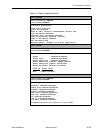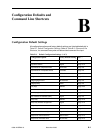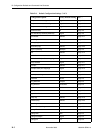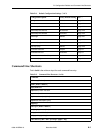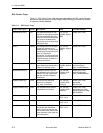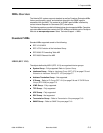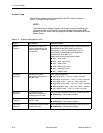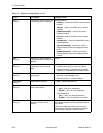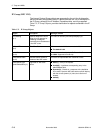
6300-A2-GB20-10 November 2003 C-1
C
Traps and MIBs
SNMP Overview
The Simple Network Management Protocol (SNMP) is an application-level
protocol used in network management to gather information from network devices.
Each DSL router runs an SNMP agent that collects data. The network
management station in the NAP domain can exercise all the management
functions remotely from the Network Operations Center (NOC).
There is no discovery of the DSL router, and it does not appear on the
Management Domain map. SNMP security is configured on the MCC card and all
SNMP requests to the DSL router are authenticated at the MCC. The MCC is the
destination for all traps originated by the DSL router.
See the Hotwire Management Communications Controller (MCC) Card, IP
Conservative, User’s Guide for more information on SNMP.
NOTE:
There are several SNMP Sets that result in resetting the DSL router. When
this happens, the NMS that sent the Set command may not receive a
response from the DSL router and will time out. This is not an error.
Traps Overview
Traps inform the NMS of an alert occurring in the system (e.g., threshold
exceeded). Traps are sent at the start and completion of a test or alarm condition.
The MCC is the destination for all traps originated by the DSL router. These traps
are then rebuilt with the trap destination information stored on the MCC and
forwarded to the appropriate trap managers.
Traps are configured via a Telnet session, terminal session, or via SNMP, and are
based on community names. Traps are included in the MIB II, Entity and Hotwire
Enterprise MIB definitions. MIBs can be accessed through the Paradyne Web site
at www.paradyne.com. Select Technical Support → MIBS.
The DSL system can send traps to three IP addressable destinations per
community (for a total of 12 destinations).



